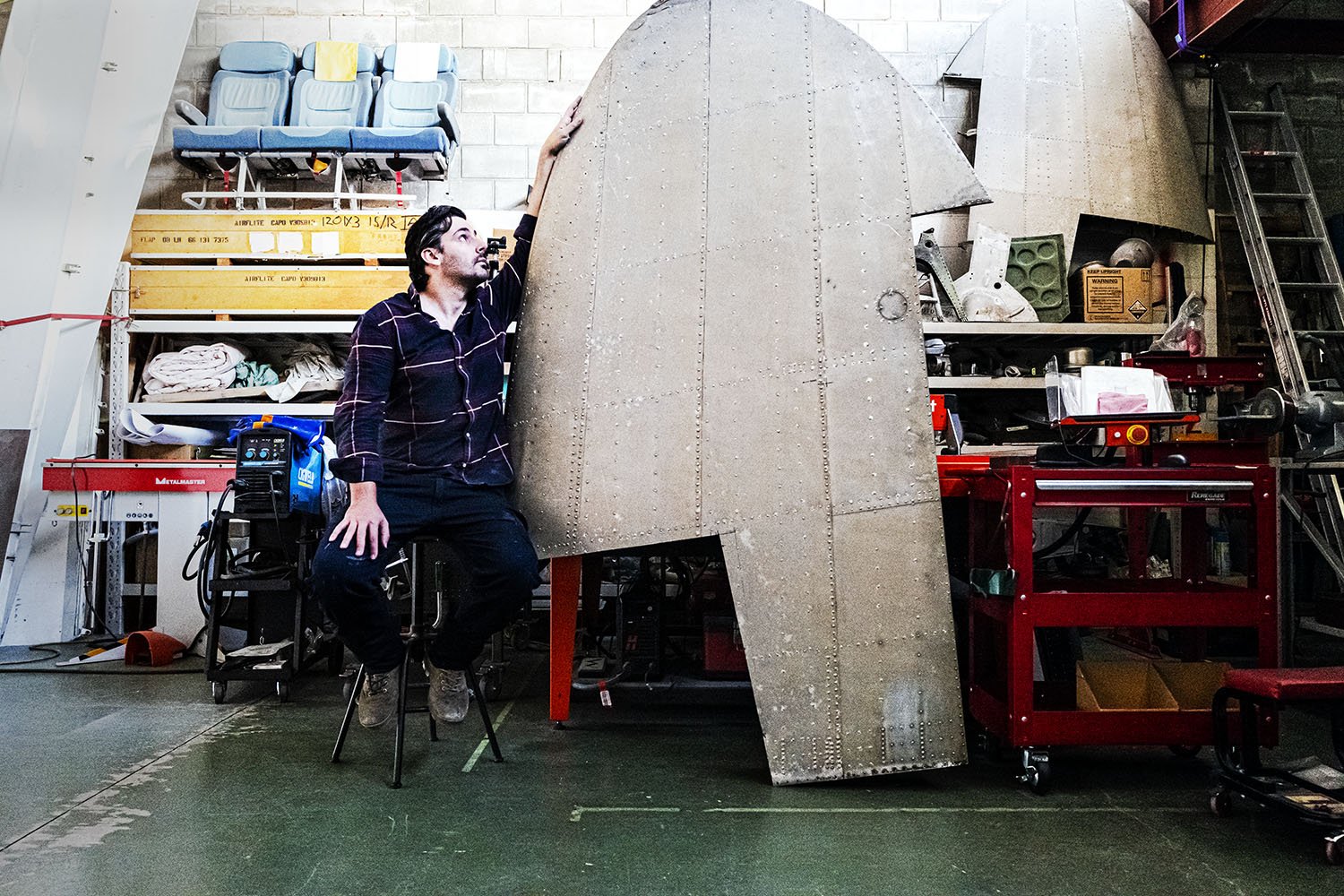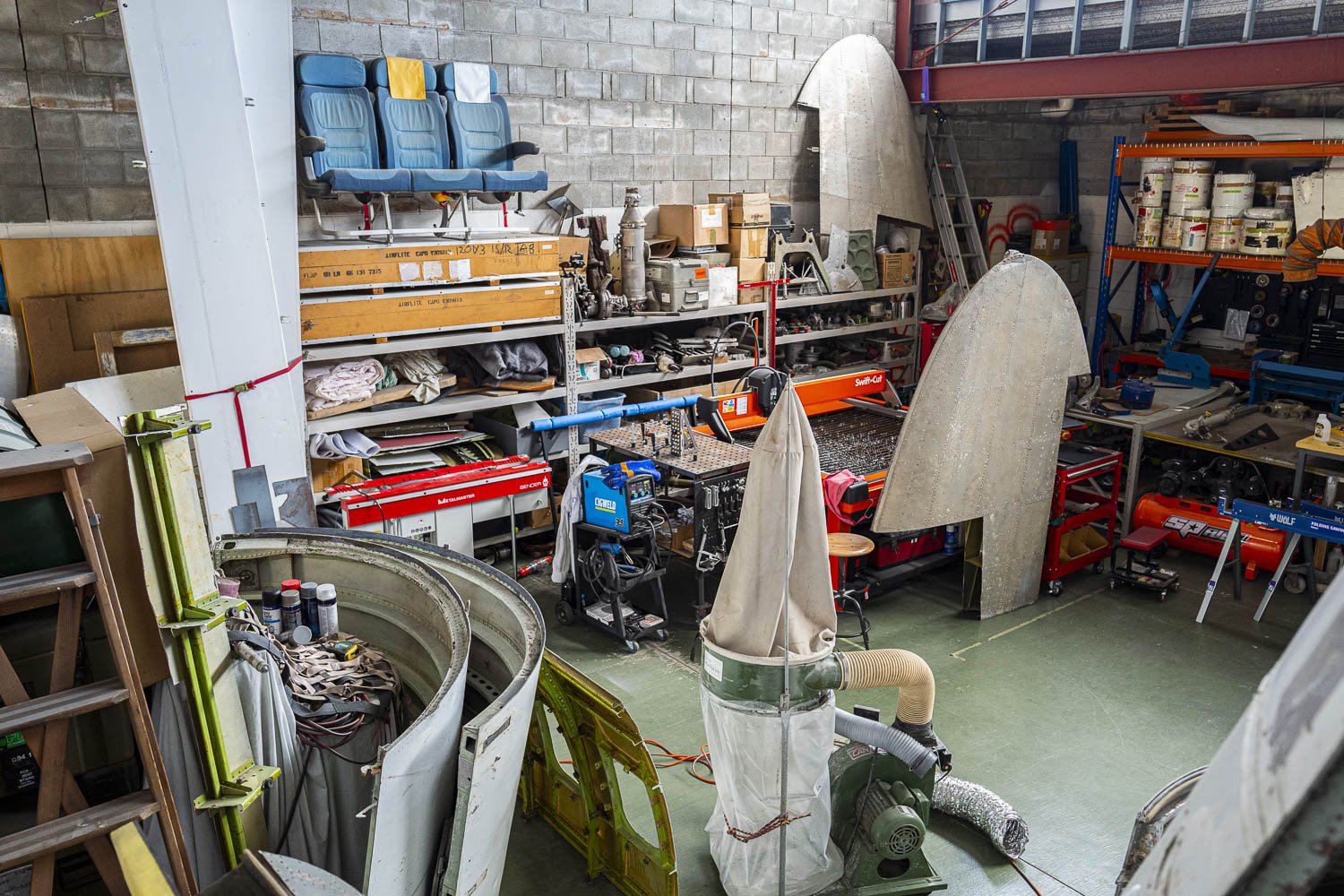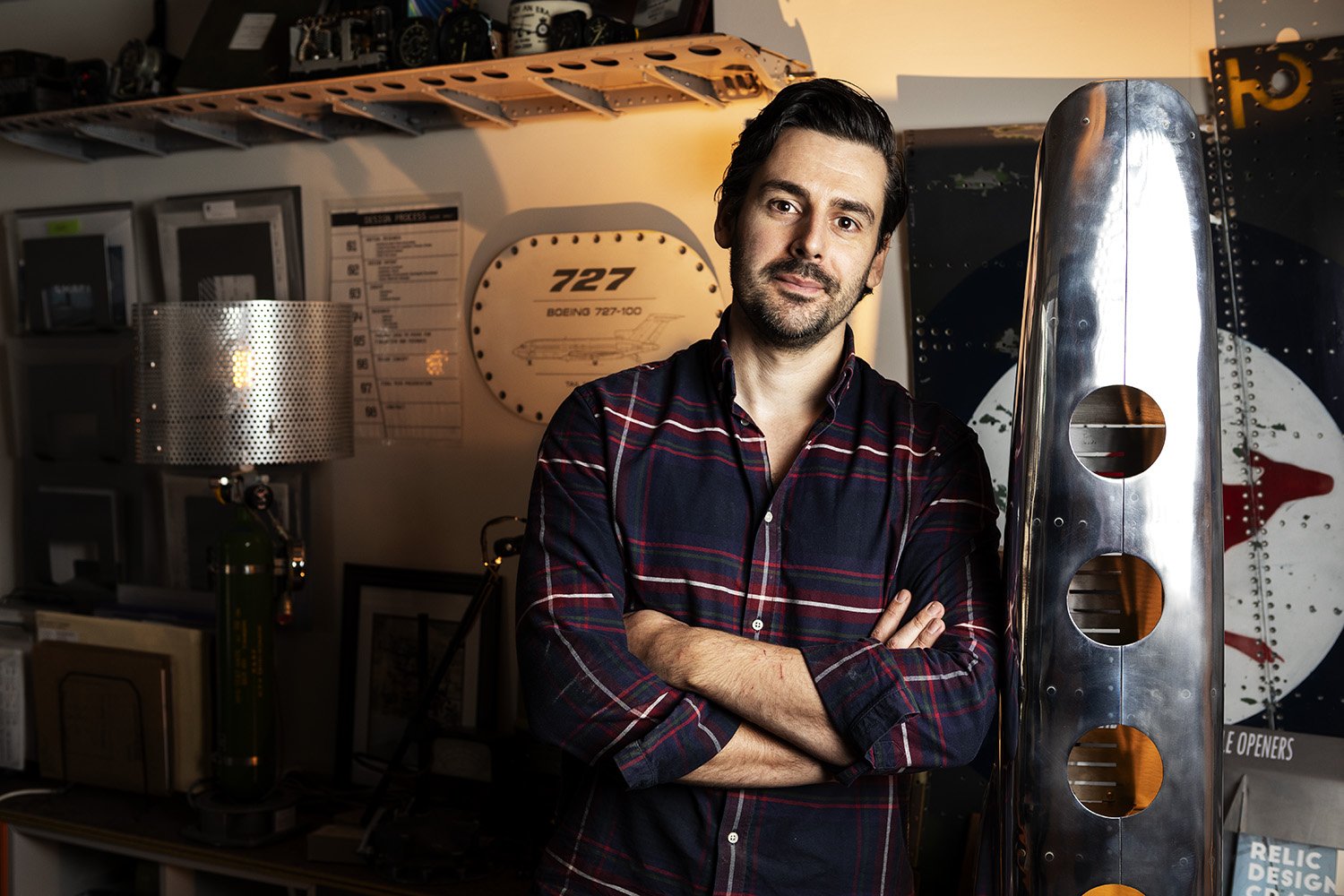Zachary Briggs
Air Force, Designer - Craftsman
Born in New Zealand, Zachary moved to Australia with his family as a small child. His father was a fish farmer, finding work in the Huron Valley in Tasmania and later in Cardwell, North Queensland. Growing up in these small coastal towns, Zachary hid his creative streak, which was evident from a young age.
“The small-town lifestyle didn’t consider art and drawing very masculine and I was called names and picked on for it. You had to like football, fishing and shooting or you’d be ostracised. You had to drink beer and Bundy rum, too,” remembers Zachary, laughing.
Without realising it, joining the military was probably the most masculine thing Zachary could have done.
“Instead of getting out of the small-town mentality, I stayed trapped in that mindset in the air force. In saying that, I really enjoyed my time in the military. It was a good experience,” he recalls.
After basic training in Adelaide, Zachary was posted to Wagga Wagga where he was trained as an Avionics Technician. He was later transferred to Townsville and worked on the Caribous; the last piston engine aircraft in the air force, and was part of a transport flying squadron. The Caribou was particularly useful in Papua New Guinea as it had short takeoff and landing capability for the mountainous terrain.
“There were lots of opportunities to feel that you were doing something rewarding, for many areas of the Pacific region.”
As the aircraft started showing signs of fatigue, the squadron closed and Zachary was transferred to the army to work on Blackhawk helicopters.
“With the army, I was deployed to East Timor for six months and that was an experience that changed me. I realised how much opportunity we Australians have, in so many areas such as health and education and a sense of security. We have a safety net. Yet, the Timorese were such happy people, who wanted to share the little they had with us. They were happy and uncomplaining even though they had so little.”
After returning to Australia, Zachary was posted to Amberley Air Force base in Queensland. But he found himself asking, “What do I really want to do?”
“I want to be more creative.”
At this realisation, Zachary began studying full time at university, completing a Bachelor of Industrial Design while continuing to work part-time at Amberley in the air force.
“At this time, I would drive past an aircraft museum near Amberley. Plane relics were lying around outside, with grass growing through them, rusting away. There were some old planes there from the Korean and Vietnam wars. I saw an excavator chopping them up one day, and I pulled in. I was upset about the idea of scrapping old things, rather than thinking about them culturally.
“I suggested that they turn some of the aircraft parts into functional pieces, to give them a new purpose as they seemingly had the workshop and equipment to do it. They stunned me with their reply, ‘Why don’t you do it?’
“They gave me a wing from an Aermacchi that very day and I made a conference table out of it, presenting it back to them shortly after.
“I was excited because I felt that I was using the knowledge I’d taken from my days in the military, as well as my studies with design and my own inbuilt creativity.”
“There were some old planes there from the Korean and Vietnam wars. I saw an excavator chopping them up one day, and I pulled in. I was upset about the idea of scrapping old things, rather than thinking about them culturally.”
Zachary was supported by the Prince’s Trust, a national charity which helps veterans transition into being business owners.
“They gave me the confidence I needed - that little boost to get my foot over the line and give it a go. The hardest part was taking that first big step.”
As Zachary developed his business, he also volunteered at museums that focused on aviation. He chose to get to know that community and they opened their arms with gratitude, providing him with aviation parts that had no further use.
“I thought getting parts would be the hardest part of the project, but they seem to pop up all the time!”
Zachary believes there is beauty in aircraft that represents the dream of leaving the earth and entering the clouds. He also sees them as a symbol of significant technological achievement.
“Other than in museums, there is a terrible waste of decommissioned aircraft. By repurposing them, I can make a positive contribution to sustainability and the historical preservation of our aviation history.”
“Finding practical applications by reclaiming scrap, by turning them into furniture and art, is the main function of my business. It also preserves the history of the original item. A decommissioned wing tip may become a bookcase, aircraft skin can become bottle openers or an emergency oxygen bottle, a desk lamp,” he says.
“I aim to make a positive contribution to the world by moving away from consumerism to creating long-lasting, quality items designed to be passed down from generation to generation, while celebrating a unique history.”
@relicdesignandcraftco






